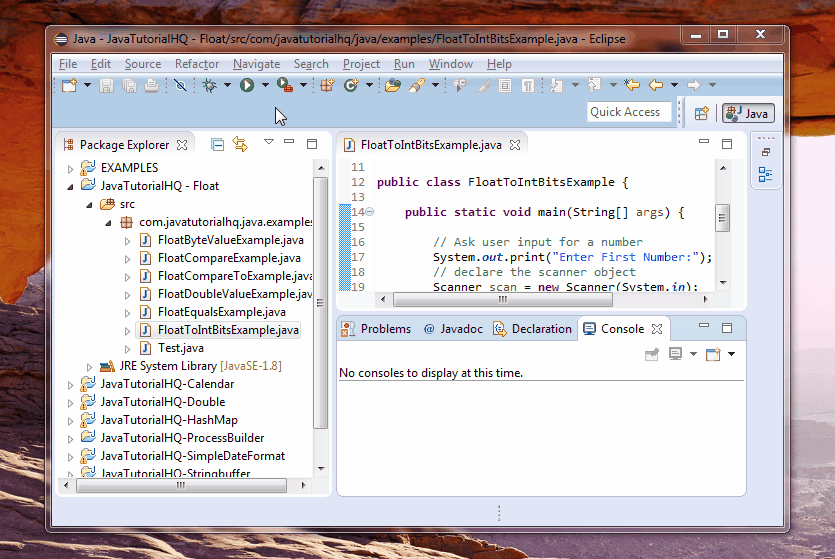java.lang.Float floatToIntBits(float value)
Description
Method Syntax
public static int floatToIntBits(float value)
Method Argument
| Data Type | Parameter | Description |
|---|---|---|
| float | value | a floating-point number. |
Method Returns
The floatToIntBits(float value) method of Float class returns the bits that represent the floating-point number.
Compatibility
Java 1.0
Discussion
There are some rules governing the floatToIntBits method and here as follows:
- If the argument is positive infinity, the result is 0x7f800000.
- If the argument is negative infinity, the result is 0xff800000.
- If the argument is NaN, the result is 0x7fc00000
- In all cases, the result is an integer, when given to the intBitsToFloat(int) method, will produce a floating-point value the same as the argument to floatToIntBits but of course there is an exception when the value is Nan and will then defaulted to one universal value which is Nan.
Java Float floatToIntBits(float value) Example
Below is a simple java example on the usage of floatToIntBits(float value) method of Float class.
package com.javatutorialhq.java.examples;
import java.util.Scanner;
import static java.lang.System.*;
/*
* This example source code demonstrates the use of
* floatToIntBits(float value) method of Float class.
*/
public class FloatToIntBitsExample {
public static void main(String[] args) {
// Ask user input for a number
System.out.print("Enter First Number:");
// declare the scanner object
Scanner scan = new Scanner(System.in);
// use scanner to get value from user console
Float value = scan.nextFloat();
// close the scanner object
scan.close();
/*
* code block to print the result of floatToIntBits method
*/
out.println(Float.floatToIntBits(value));
}
}
Basically on the above example, we just ask for user input on the console and then we use the scanner object to get the float input. After that we assign the value to an Float wrapper class and we then get the integer bits equivalent using the floatToIntBits(float value) method of Float class.

